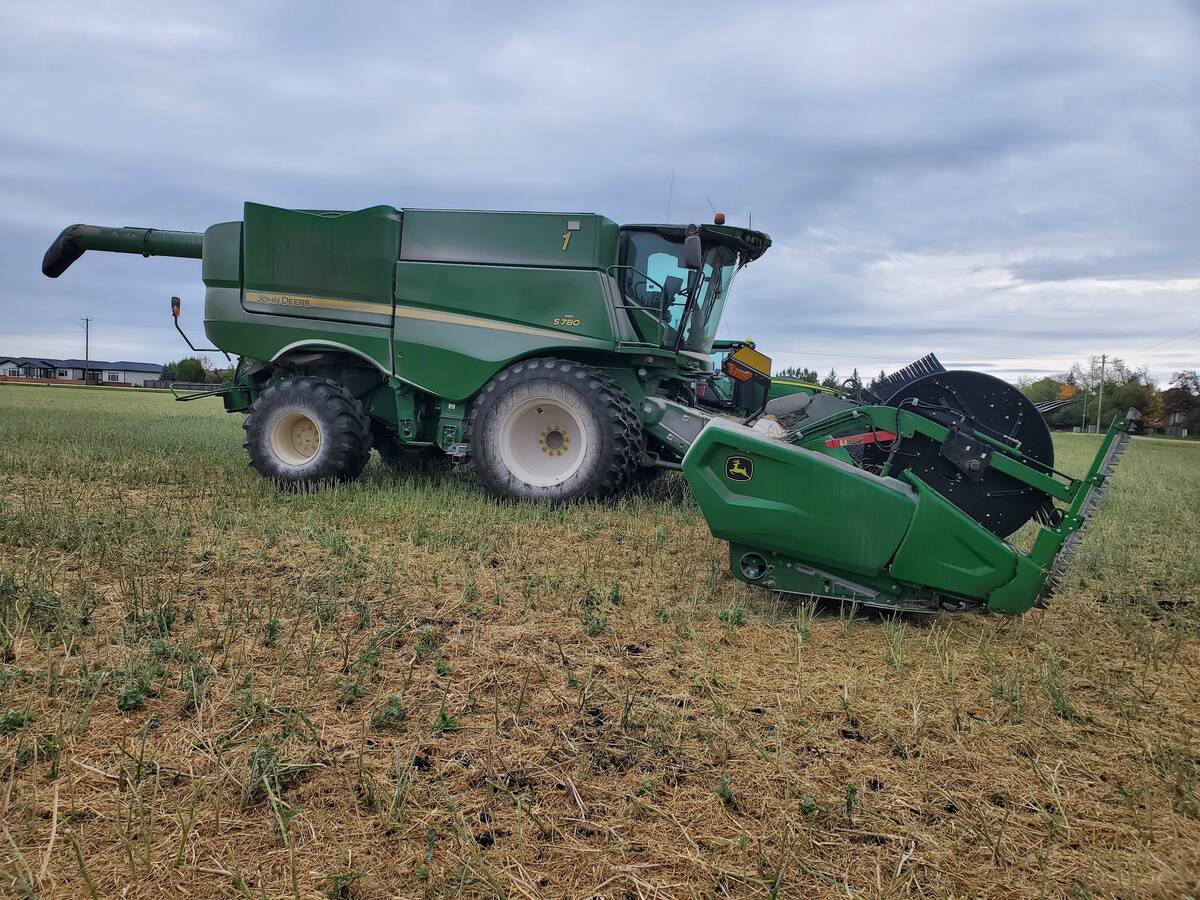SAN ANTONIO, Texas — Unprecedented cattle and beef prices have put the jingle back in producers’ spurs.
Prices have slumped a bit in the new year, but they are still considerably higher than at the end of 2013.
“It’s an awful good market, and it is an awful good time to be in the business,” said Dennis Metzger, vice-chair of the Livestock Marketing Council, which met during the National Cattlemen’s Beef Association annual convention held in San Antonio Feb. 3-7.
Members of the council, which represents auctions and order buyers, reported that yearlings have been trading for less than they were at the end of last year, and fewer heifers have been marketed. However, some may show up later on when producers decide not to keep them for breeding.
Read Also

Powdery mildew can be combine fire risk
Dust from powdery mildew can cause fires in combines.
“This is the first time in 20 years of the order buying business that we are all out of cattle,” said John Rose of Montana, who chairs the council.
“We have never seen that. The prices were high enough and they all went to town.”
Tight supply and improved global demand lifted the industry out of the doldrums after years of negligible profitability, Cattlefax analysts said during an NCBA forum held Jan. 5.
“When we look at these 2014 record prices, these were not just a U.S. issue, this was a global phenomenon,” said Brett Stuart.
The United States, Canada, Australia, New Zealand, Brazil and India all enjoyed elevated prices, which are expected to stay high this year.
The contributing factor was demand overtaking supply.
Most commodities have kept up with population growth since the 1960s, but beef did not. Beef production has not increased in eight years, which boosted prices at a time when more people wanted to buy it.
A small expansion of one percent has started in the United States, but increased production is not likely until 2016-17, when the first calves start to hit the ground.
The United Nations says the world needs an extra nine million tonnes of beef in the next nine years.
“On a global basis, I don’t think we are going to be able to do that,” Stuart said.
“Demand is outstripping supply. We are going to be chasing supply to appease a hungry planet.”
Smaller herds mean there are fewer cattle to process.
The U.S. lost three non-fed packers and one fed plant last year because of inadequate supplies, said Cattlefax analyst Kevin Good.
U.S. slaughter was down by 2.5 million head, or 9,000 head per day. The commercial cow slaughter was down 14 percent, and heifer slaughter dropped by eight percent.
This last occurred in 1994 when the industry was in an expansion phase.
All proteins experienced a good year. Wholesale and retail prices were up for beef, pork, poultry and milk worldwide, thanks to tight supplies.
U.S. retail prices for beef were up 13 percent. Retail prices for all meat are expected to stay strong, and a larger share of that money is being returned to producers.
Expansion in the U.S. herd was noted in the most recent government inventory report. More cattle should start to ease the shortages, and prices will adjust accordingly.
“Not that we think this year is going to be a disaster,” Good said.
“We think prices are going to be very strong, but we need to recognize we’ve got a trend change in place because of bigger beef supplies in the future and bigger meat supplies today.”
Cow-calf producers could take the herd up to 32 to 33 million head, and still remain profitable.
Producers considering expansion should carefully calculate the economics to avoid paying too much.
It usually takes one and a half 550 pound steer calves to pay for a bred cow, so this year they could be worth $2,060 to $2,228. Bred heifers will also be higher, but it is important to study the market so that they are not over-valued.
Markets are expected to be volatile for the coming year, said the analysts.
Break-even levels for feedlots will be $160 to $170 per hundredweight for those in the cash market. Twenty percent of fats will be sold on the cash market, while the rest will be traded through marketing agreements.
Risk management during these unpredictable times is crucial, said Randy Blach, chief executive officer of Cattlefax.
“We are going to see some corrections in this market as we move forward,” he said.
Fed cattle were trading around $119 per cwt. in June 2013, which increased to $173 per cwt. by last November.
Feeders jumped to $240 from $130 per cwt. for the same period.
Cattlefax predicts that a 550 lb. calf will sell for $235 to $290 per cwt. and could drift lower in the fall run.
A 750 lb. steer could trade from $195 to $240 per cwt., an increase of more than six percent from last year.
A finished steer could average $157 per cwt. with a price range of $140 to $170. Cattlefax expects negative feeding margins for the first half of the year with improvements in the last two quarters.
Cows should trade from $90 to $125 per cwt. as the demand for lean grinding meat remains strong.
Blach expects price shifts to start next year as herds rebuild.

















